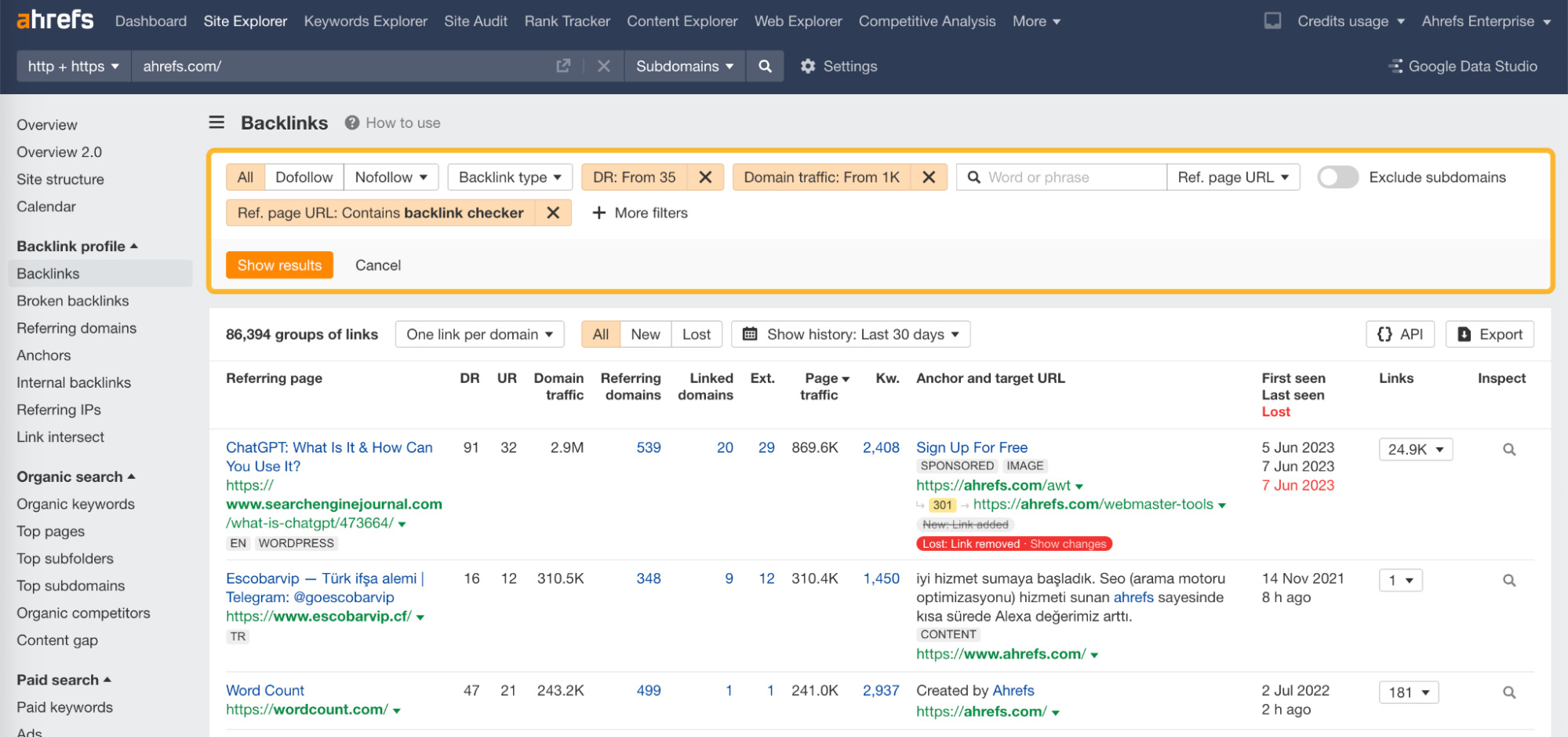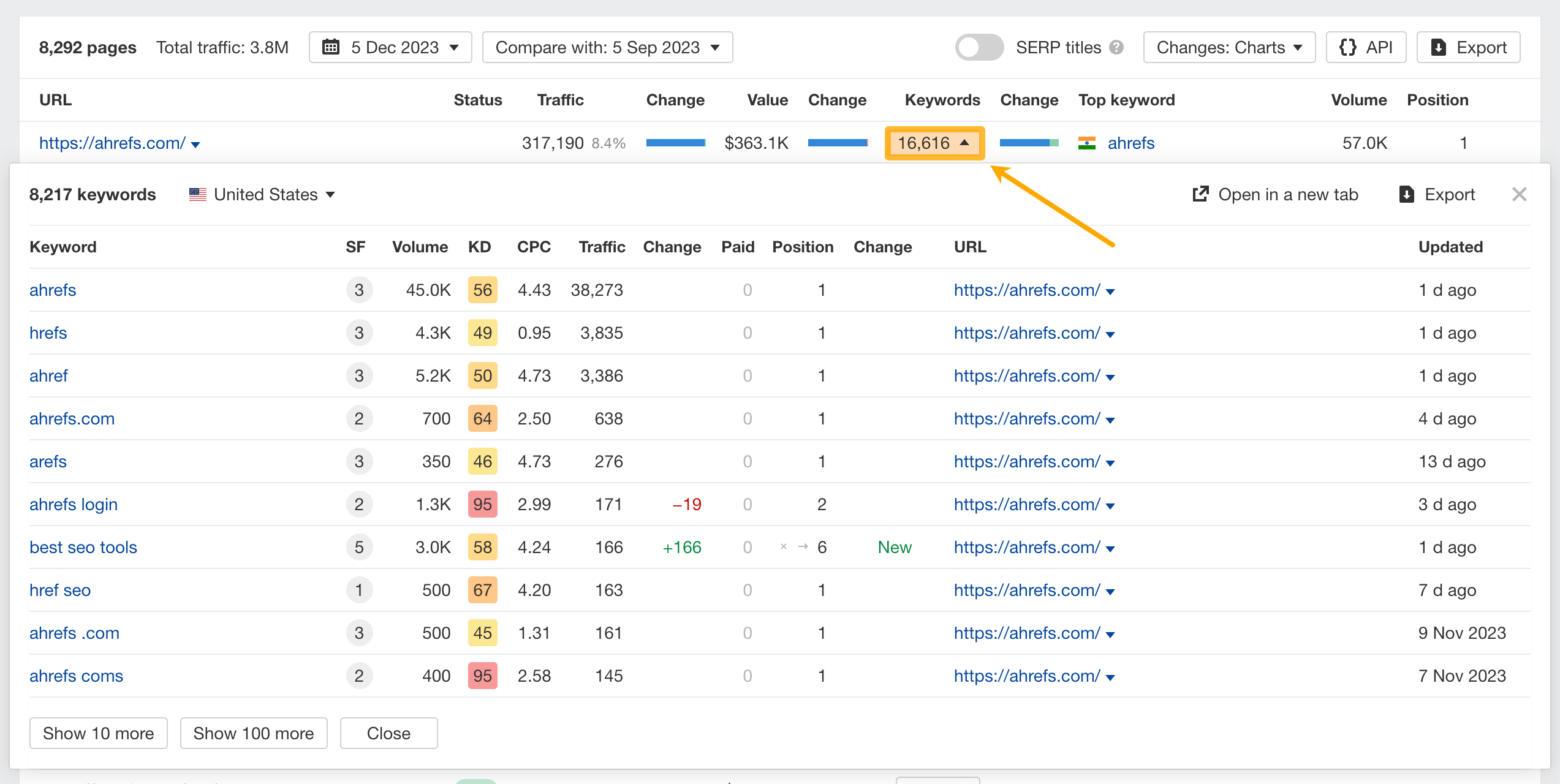In this article, we’ll explain the steps we took to make our pricing less confusing and even more transparent and fair for everyone.
We wanted to make sure our users have a quick and easy way to see their monthly usage and understand different user types.
Hence, we’ve completely redesigned the Credits usage counter next to your account name.
Now, when the counter is filled up, the first three sections are colored blue and represent included credits. While the fourth section is colored orange to represent the shared pool of additional credits.
For more information, you can simply hover over each section and view the details of your current usage level.

It doesn’t make sense to charge a credit every time you apply a new filter, right?
Early on, we introduced a feature that allows you to add multiple filters at once. After adding all your desired filters, click on the Show results button to apply them in bulk. This action is much faster and only consumes one credit, regardless of the number of filters applied.

Usage-based pricing is meant to scale with your needs, allowing you to consume as many credits as you want in a given month.
With that said, the PAYG charges are disabled by default. This means that once you’ve exhausted your pre-paid credits, you won’t be able to continue using certain tools. Rest assured that we’ll notify you when you reach the limit in the corresponding tool.
PAYG purchases such as report credits, export rows, crawl credits, and API units, last for three billing months, including the current one.
For example, if the usage reset date is set to the 20th October and you’ve purchased PAYG credits on the 15th October, they will expire on the 20th December.

Please note though that pre-paid limits are always used first.
We’ve also made it easier to allocate credits across the team.
Workspace admins can now set user limits either individually or in bulk. This helps you allocate credits more efficiently when additional ones are shared from the common workspace pool.

We understand that, sometimes, you may need to access the same report within a short period of time (for the same website and with the same filters).
To make it convenient, we won’t charge any extra credit for opening the same report within up to 30 minutes from when you first access it.
Users who have reached their credit limit can still access the dashboard and get a bird’s-eye view of their projects.
To achieve this, we’ve set up the dashboard so it only consumes one credit every 31 days to load all existing projects.
However, if you add a new project to the dashboard, that will consume one extra credit (no matter how many projects are added/imported at a time), since we need to reload it with fresh data.

You can arrive at valuable insights when sorting data in ascending or descending order. Hence, we decided not to charge credits when sorting tables by any column.
Nested reports don’t provide the same value as their parent counterparts.
Therefore, nested tables in Site Explorer and Competitive Analysis reports now consume export rows (instead of credits). Our pricing plans start at 500k export rows, which should be plenty sufficient for everyone.

NOTE: The only exception are the SERP and Position history charts.
Conclusion
Developing usage-based pricing for a complex product like Ahrefs turned out to be quite a challenge. But we’re committed to improving the system and making sure it’s completely transparent and fair for all of our users.
Got questions? Feel free to start a discussion in our community.


